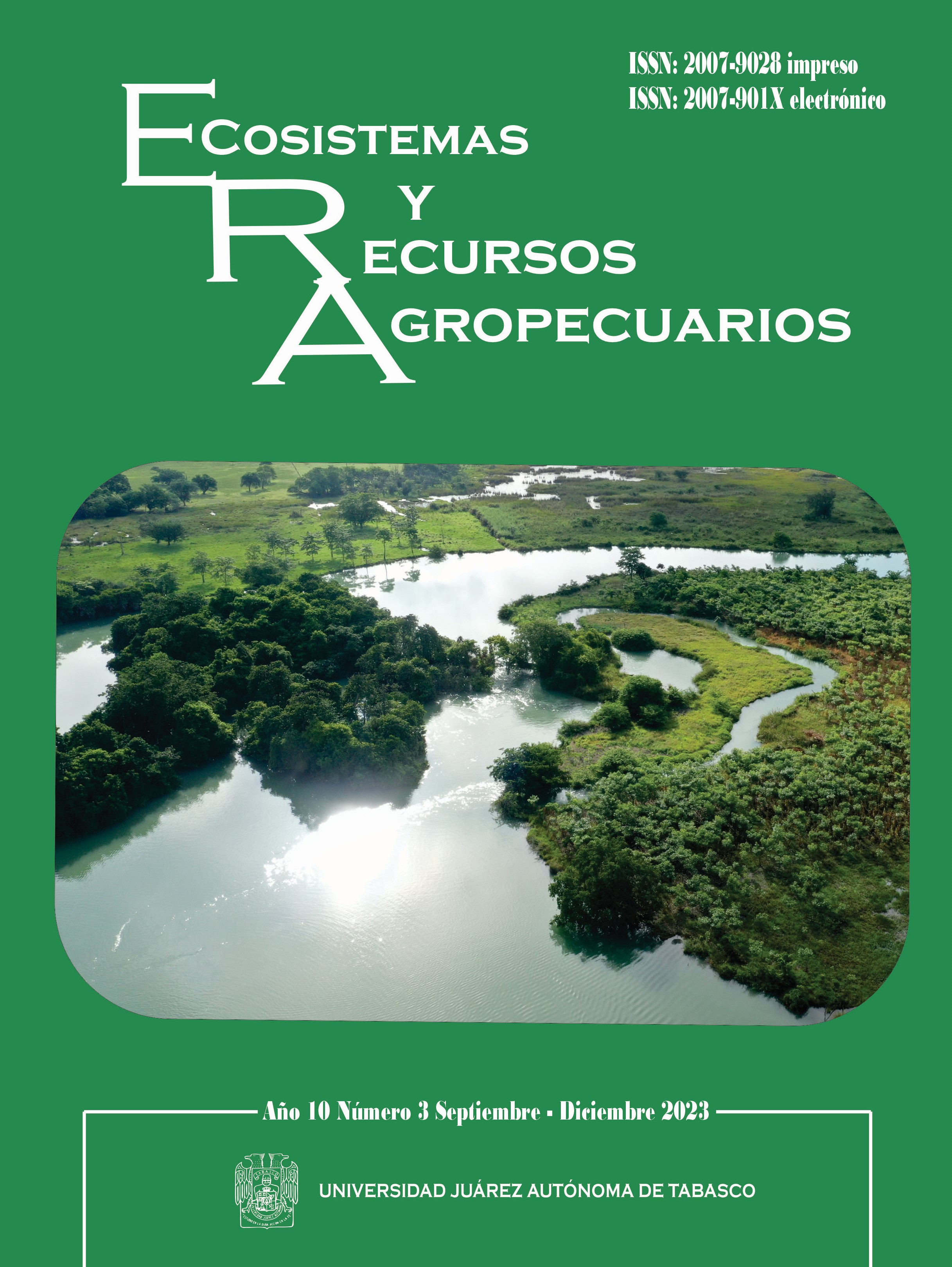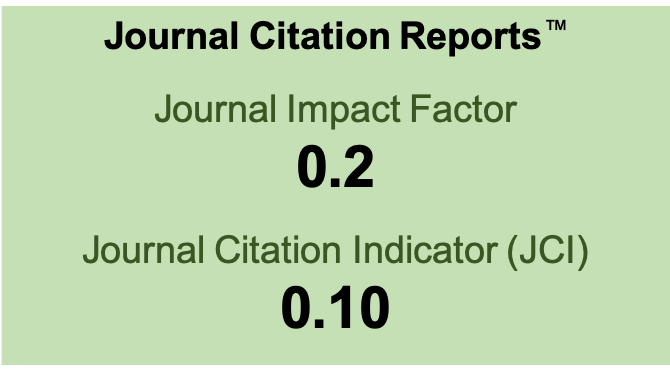Importance of the corpus luteum at the beginning of the protocols to syncronize estrus in sheep
DOI:
https://doi.org/10.19136/era.a10n3.3312Keywords:
Estradiol; follicular wave; progesterone; prostaglandin; reproductionAbstract
The aim was to examine the exogenous supply of progesterone, and the influence of the corpus luteum (CL) at the beginning of the estrus synchronization protocols in sheep, for 6 and 11 days, on reproductive variables. The sheep were presynchronized to obtain a premature or functional CL at the beginning of the synchronization period to be evaluated. Estrus presentation was lower in short treatments; This triggered a difference (p < 0.05) in pregnancy rate between short and conventional treatments. On the day of estrus, steroid concentration was different: progesterone was higher in short treatments; while estradiol was lower in the short treatment with CL. The presence of a premature or functional CL at the initiation of the treatments commonly used to synchronize estrus does not modify the expression of the reproductive variables; Nevertheless, in short treatments the expression is affected. It is important to use ultrasonography to corroborate what happened at the ovarian level.
Downloads
References
Alvarado-García P, Torres-Cruz M, Grajales-Lombana H A (2022) Concentraciones de progesterona durante el ciclo estral en ovinos en el trópico colombiano. Revista MVZ Córdoba 27: e2156. DOI: 10.21897/rmvz.2156.
Año-Perello A, Santos-Jimenez Z, Encinas T, Martinez-Ros P, Gonzalez-Bulnes A (2020) Use of GnRH for synchronization of the follicular wave in assisted reproductive technologies in sheep: A preliminary study. Animals 10: 7. DOI: 10.3390/ani10071208
Argudo DE, Tenemaza MA, Merchán SL, Balvoa JA, Méndez MS, Soria ME, Galarza LR, Ayala LE, Hernández- Fonseca HJ, Perea MS, Perea FP (2020) Intraovarian influence of bovine corpus luteum on oocyte morphometry and developmental competence, embryo production and cryotolerance. Theriogenology 155: 232-239.
Arsoy D, Sa˘gmanlıgil V (2018) Reproductive cycles in white karaman ewes: Comparison of ovarian hormone secretion and reproductive behavior in non-pregnant and pregnant ewes in semi-intensive conditions. Acta Scientiarum - Animal Sciences 40: e39908. DOI: 10.4025/actascianimsci.v40i1.39908.
Chamba-Ochoa HR, Benítez-González EE, Pesántez-Campoverde MT (2017) Factores predisponentes para la enfermedad quística ovárica bovina y su efecto en la eficiencia reproductiva. Revista de Medicina Veterinaria 35: 17-28.
Correa-Aguado PI, Cortés-Vidauri Z, Aréchiga-Flores CF, Rincón-Delgado RM, Valdez-Miramontes CE, López-Carlos MA, Mejía HI (2022) El ciclo reproductivo de la oveja. South Florida Journal of Development 3: 6903-6929.
Cuadro F, dos Santos-Neto PC, Pinczak A, Barrera N, Crispo M, Menchaca A (2018) Serum progesterone concentrations during FSH superstimulation of the first follicular wave affect embryo production in sheep. Animal Reproduction Science 196: 205-210.
García E (2004) Distribución de los grupos climáticos de Koppen en México. Modificaciones al sistema de clasificación climática de Köppen (Para adaptarlo a las condiciones de la República Mexicana). Primera parte. Instituto de Geografía. 4 Ed. Universidad Nacional Autónoma de México. México. 217p.
Gonzalez-Bulnes A, Menchaca A, Martin GB, Martinez-Ros P (2020) Seventy years of progestagen treatments for management of the sheep oestrous cycle: where we are and where we should go. Reproduction, Fertility and Development 32: 441-452.
López J, Salinas D, Baracaldo-Martínez A, Gómez C, Herrera-Ibatá D, Atuesta-Bustos JE (2021) Efecto de la dosis de gonadotropina coriónica equina (eCG) asociada a protocolos cortos de sincronización de celo sobre el desempeño reproductivo de ovejas de pelo. Revista de Investigaciones Veterinarias del Perú 32: e17775. DOI: 10.15381/rivep.v32i1.17775.
Luna-Palomera C, Macías-Cruz U, Sánchez-Dávila F, Ojeda-Robertos NF, Peralta-Torres JA (2023) Los dispositivos reutilizados en protocolos cortos de sincronización tienen el mismo efecto sobre el desempeño reproductivo y perfiles de progesterona en ovejas Pelibuey. Información Técnica Económica Agraria 119: 149-157. DOI: 10.12706/itea.2022.014.
Martinez-Ros P, Gonzalez-Bulnes A (2019) Efficiency of CIDR-based protocols including GnRH instead of eCG for estrus synchronization in sheep. Animals 9: 4. DOI: 10.3390/ani9040146.
Martinez-Ros P, Rios-Abellan A, Gonzalez-Bulnes A (2018) Influence of progesterone-treatment length and eCG administration on appearance of estrous behavior, ovulatory success and fertility in sheep. Animals 9: 9. DOI: 10.3390/ani9010009.
Menchaca A, Cuadro F, dos Santos-Neto PC, Bosolasco D, Barrera N, de Brun V, Crispo M (2018) Oocyte developmental competence is improved by relatively greater circulating progesterone concentrations during preovulatory follicular growth. Animal Reproduction Science 195: 321-328.
Menchaca A, Rubianes E (2004) New treatments associated with timed artificial insemination in small rumiants. Reproduction, Fertility and Development 16: 403-413. DOI: 10.10371/RD04037
Molina-Mendoza P, Sánchez-Torres-Esqueda T, García-Flores EO, Martínez-García A, Cárdenas-León M, Peralta- Ortiz J, Cordero-Mora JL, Hizarza-Espinoza A, Ortega-Cerrilla ME (2005) Manipulación de la presencia del cuerpo lúteo en la sincronización de estro en ovejas Dorset. Agrociencia 39: 11-18.
Montes-Quiroz GL, Sánchez-Dávila F, Grizelj J, Bernal-Barragán H, Vazquez-Armijo JF, del Bosque González AS, Luna-Palomera C, González-Gómez A, Ledezma-Torres RA (2018) The reinsertion of controlled internal drug release devices in goats does not increase the pregnancy rate after short oestrus synchronization protocol at the beginning of the breeding season. Journal of Applied Animal Research 46: 714-719.
NRC (2007) Nutrient requirements of small ruminants: sheep, goats, cervids, and new world camelids. National Research Council. Washington, DC, USA. National Academy Press. 362p
Swelum AAA, Saadeldin IM, Moumen AF, Ali MA, Ba-Awadh H, Alowaimer AN (2018) Efficacy of using previously used controlled internal drug release (CIDR) insert on the reproductive performance, hormone profiles and economic measures of sheep. Reproduction in Domestic Animals 53: 1114-1122.
Uribe-Velásquez LF, Lenz Souza MI, Correa-Orozco A (2011) Efecto de altas concentraciones de progesterona durante la fase luteal temprana sobre la secreción de LH y estradiol en ovejas. Veterinaria y Zootecnia 5: 44-54.
Uriol M, Martinez-Ros P, Rios A, Encinas T, Gonzalez-Bulnes A (2019) Onset of oestrus and periovulatory events in sheep exposed to 5 and 14 days of CIDR treatment with and without eCG. Reproduction in Domestic Animals 54: 1489-1492.
Downloads
Published
Issue
Section
License
Copyright (c) 2023 Ecosistemas y Recursos Agropecuarios

This work is licensed under a Creative Commons Attribution-NonCommercial-ShareAlike 4.0 International License.
Aviso de copyright
Los autores que se envían a esta revista aceptan los siguientes términos:
una. Los autores conservan los derechos de autor y garantizan a la revista el derecho a ser la primera publicación del trabajo con una licencia de atribución de Creative Commons que permite a otros compartir el trabajo con un reconocimiento de la autoría del trabajo y la publicación inicial en esta revista.
B. Los autores pueden establecer acuerdos complementarios separados para la distribución no exclusiva de la versión del trabajo publicado en la revista (por ejemplo, en un repositorio institucional o publicarlo en un libro), con un reconocimiento de su publicación inicial en esta revista.
C. Se permite y se anima a los autores a difundir su trabajo electrónicamente (por ejemplo, en repositorios institucionales o en su propio sitio web) antes y durante el proceso de envío, ya que puede conducir a intercambios productivos, así como a una cita más temprana y más extensa del trabajo publicado. (Consulte El efecto del acceso abierto).



